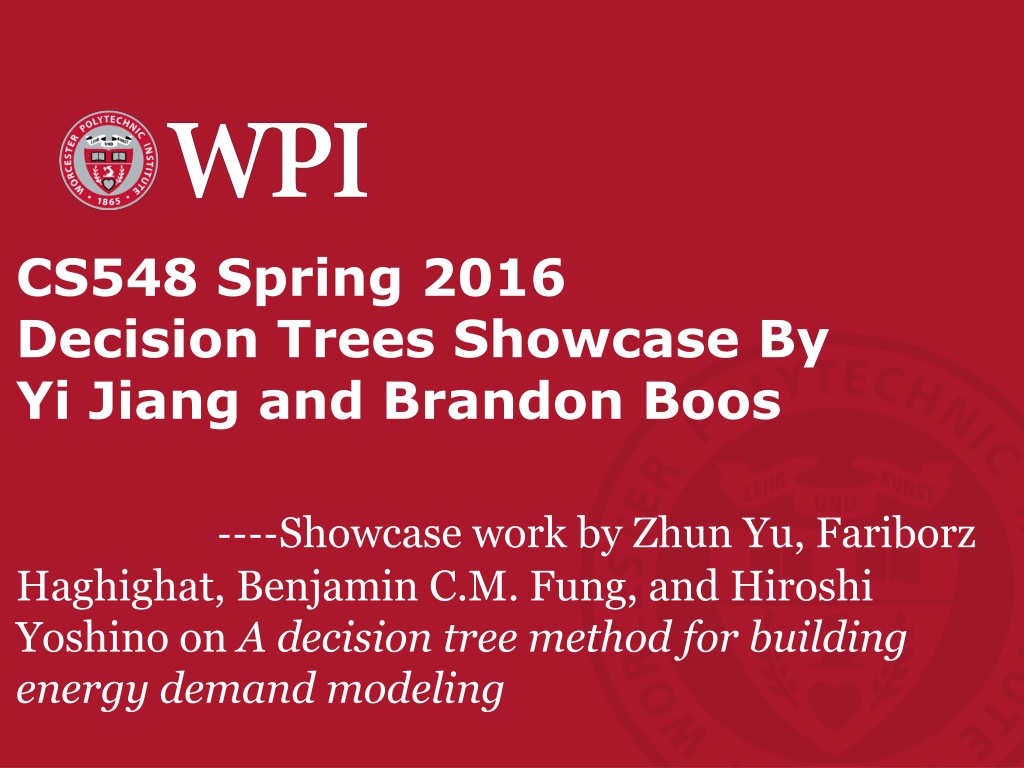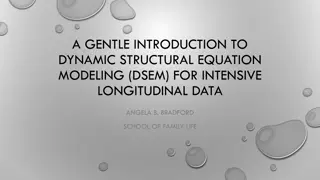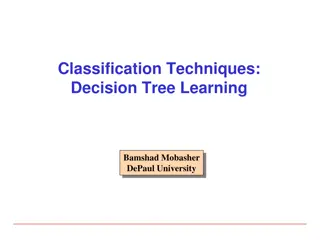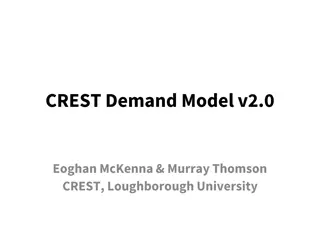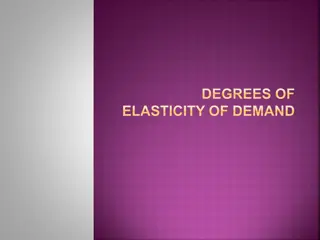Decision Tree Method for Energy Demand Modeling
This showcase presents a decision tree method developed by Zhun Yu, Fariborz Haghighat, Benjamin C.M. Fung, and Hiroshi Yoshino for building energy demand modeling at Worcester Polytechnic Institute. The method utilizes simple rules to partition variables and improve building design efficiency by predicting Energy Use Intensity (EUI). The comparison with other methods highlights decision tree's advantages in interpretability and execution ease. The project involved field surveys on energy-related data in residential buildings, and the process included data set collection, decision tree generation, and accuracy estimation.
Download Presentation

Please find below an Image/Link to download the presentation.
The content on the website is provided AS IS for your information and personal use only. It may not be sold, licensed, or shared on other websites without obtaining consent from the author.If you encounter any issues during the download, it is possible that the publisher has removed the file from their server.
You are allowed to download the files provided on this website for personal or commercial use, subject to the condition that they are used lawfully. All files are the property of their respective owners.
The content on the website is provided AS IS for your information and personal use only. It may not be sold, licensed, or shared on other websites without obtaining consent from the author.
E N D
Presentation Transcript
CS548 Spring 2016 Decision Trees Showcase By Yi Jiang and Brandon Boos ----Showcase work by Zhun Yu, Fariborz Haghighat, Benjamin C.M. Fung, and Hiroshi Yoshino on A decision tree method for building energy demand modeling Worcester Polytechnic Institute
References [1] Zhun Yu, Fariborz Haghighat, Benjamin C.M. Fung, and Hiroshi Yoshino. A decision tree method for building energy demand modeling, Energy and Building, Vol. 48, no. 10, pp. 1637- 1646, Oct. 2010 [2] James, Witten, Hastie and Tibshirani. An Introduction to Statistical Learning with Applications in R. Springer Texts in Statistics Vol. 103, 2013 Worcester Polytechnic Institute 2
Why Predicting EUI matters? EUI stands for Energy Use Intensity Energy consumption throughout the world increased significantly . For efficient building design Taken from baidu.com/imaghttp://news.zhulong.com/read2 05630.html Worcester Polytechnic Institute 3
Overview of Decision tree What is a tree? A tree is a prediction method with simple rules to divide the range of variables into smaller and smaller sections. Taken from http://www.taopic.com/vector/201212/286317.html Worcester Polytechnic Institute
Cons & Pros Comparison among three method in this paper Decision tree wins!(the accuracies are almost the same) Tree methods Regression ANN models can model complex relationships complicated to operate models simple and efficient Advantage understandable interpretable easy to execute too easy Disadvantage hard to interpret Worcester Polytechnic Institute
Data Set In this project, field surveys on energy related data and other relevant information were carried out in 80 residential buildings in six different districts in Japan 13 observations have missing value. They use 55 observations in training data set Target variable:EUI: high or low Variables: Taken from [1] Worcester Polytechnic Institute
Decision Tree Generation Splitting dataset into training and test data Attribute Selection Criterion Generating decision tree using training data Estimating the accuracy Improve the model Worcester Polytechnic Institute
Results - The Decision Tree Decision Tree from training data Confusion matrix for training data using decision tree Taken from [1] Worcester Polytechnic Institute 8
Results - Prediction on Test Data Taken from [1] Worcester Polytechnic Institute 9
Results - Nodes pt. 1 Non-Leaf Node: Node # # of Data Instances Entropy Value Split Attribute Worcester Polytechnic Institute 10 Taken from [1]
Result - Nodes pt. 2 Leaf Node: Node # # of Data Instances Avg. EUI EUI Class Stopping Criteria Met Taken from [1] Worcester Polytechnic Institute 11
Results - Decision Rules Example Rule for Node 10: If TEMP is high and HLC < 3.89 and ELA < 4.41 and HWS is electric then EUI is LOW Taken from [1] and modified Worcester Polytechnic Institute 12
Observations - Important Attributes Worcester Polytechnic Institute 13
Observations - Interesting The importance of attributes for high and low temperature areas are different High temperature areas benefit from a certain value of equivalent leakage area as long as the heat loss coefficient is low enough Worcester Polytechnic Institute 14
Conclusions The decision tree provides an easily understood model which can help building designers and owners know which attributes to prioritize in order to lower energy use Non-binary classification could improve the results but would also increase chance of misclassification Larger data set needed Worcester Polytechnic Institute 15
